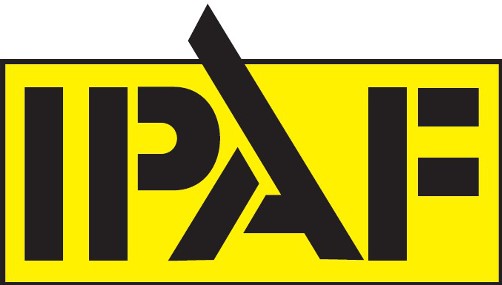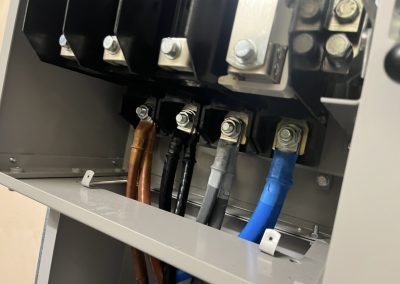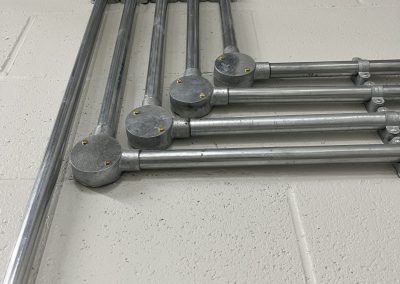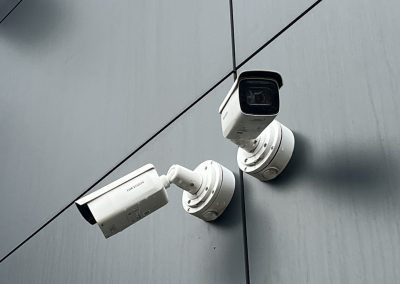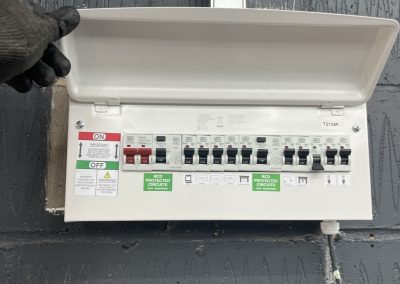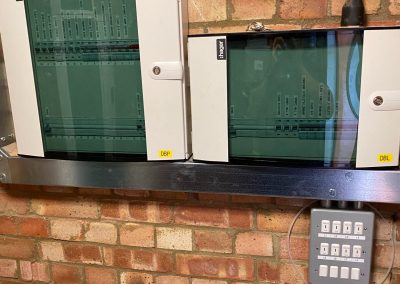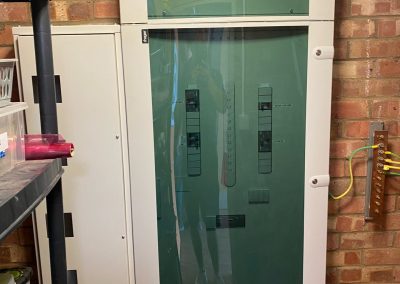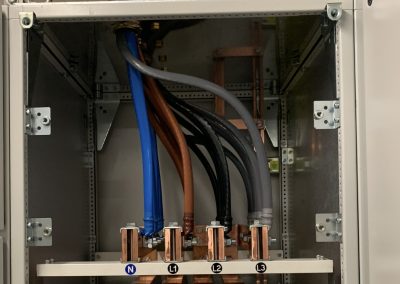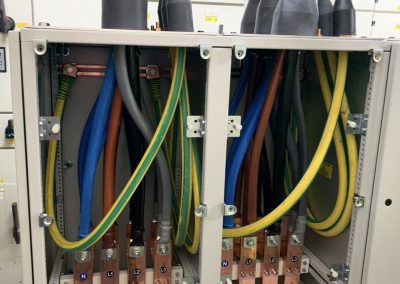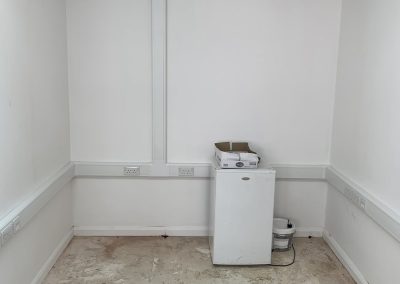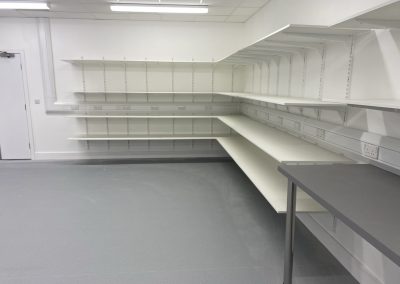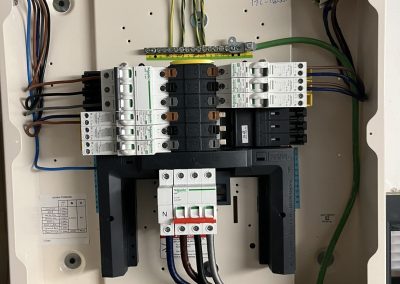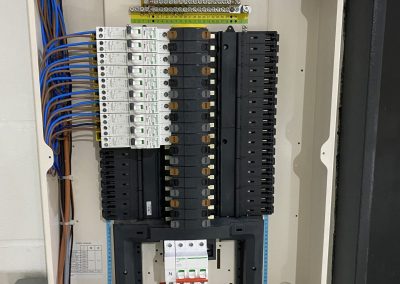Case Studies
Real Results with Edge Electrical
Client Overview
The client is a medium-sized manufacturing company operating in a commercial facility that houses large machinery, office spaces, and storage. The existing electrical system was outdated and unable to handle the growing demands of modern operations, which included the addition of more energy-intensive equipment. The company required a reliable electrical infrastructure to ensure that all operations ran smoothly without risk of outages or system failures. They reached out for a full upgrade of the electrical mains to accommodate their increasing load demands.
Objectives
The objectives of the project was to:
- Upgrade the mains cables to support the three-phase electrical system of the commercial facility.
- Enhance safety by ensuring compliance with the BS7671 and reducing the risk of electrical failures.
- Increase capacity to support the current and future load demands of the premises, including both machinery and office systems.
Solution
Installation of New Mains Cables
- Site Assessment and Load Analysis
The first step in the project was a comprehensive site assessment. This included a load analysis of the current and projected power usage across the entire premises. The analysis revealed that the current mains cables were rated for a much lower capacity than what was required to support the growing operational demand. The new system needed to provide sufficient capacity to power heavy machinery and office equipment without putting the electrical system.
2. The upgraded system provided several immediate benefits to the client:
- Enhanced capacity: The new mains cables and upgraded LV panel allowed the premises to operate without overloading, even during peak operational hours. The three-phase system was now capable of handling heavy machinery without risk of failure.
- Improved safety: The installation of modern circuit breakers such as MCCBs, RCBOs, and surge protection devices improved the overall safety of the electrical system, minimizing risks of electrical shock, fire, and damage to equipment.
- Increased reliability: The load balancing across phases improved the system’s reliability, ensuring that there was minimal downtime or disruption to the business operations.
- Future readiness: The upgraded electrical infrastructure is designed to handle future growth, whether through the addition of new machinery or the expansion of the facility.
Client Overview
The client is a large regional hospital providing comprehensive healthcare services across multiple departments. With a growing number of patients and medical staff, the hospital was seeing an increasing demand for charging solutions for medical devices, staff equipment, and patient mobility aids (e.g., electric wheelchairs, patient monitoring systems). The hospital wanted to install a comprehensive and organized system to accommodate the growing number of charging stations, ensuring both safety and efficiency.
Problem Statement
The hospital’s existing electrical containment system was outdated and could not support the installation of additional power outlets and charging stations needed for medical equipment. The challenges included:
- Insufficient power outlets: Key areas, including patient rooms, nurses’ stations, and treatment rooms, lacked sufficient charging outlets for modern medical equipment and mobile devices.
- Cluttered and unsafe wiring: Current wiring and power solutions were cluttered, often creating safety hazards such as exposed cables or over-loaded extension leads.
- Compliance concerns: Existing setups did not meet current electrical containment regulations for healthcare facilities, which are particularly stringent due to patient safety concerns.(HTM)
- Lack of flexibility: The hospital required a flexible system that could easily adapt to future equipment upgrades and relocation of charging points without major rewiring or disruption.
Objectives
The primary objectives of the project were:
- Design and install electrical containment systems that met modern healthcare standards(HTM).
- Implement dado trunking to provide accessible, safe, and well-organized charging stations for medical and staff equipment.
- Improve electrical safety by reducing exposed wiring and eliminating the use of temporary or overloaded extension leads.
- Ensure future adaptability by installing a flexible containment system that allows easy modifications or additions to the charging infrastructure.
Solution: Electrical Containment and Dado Trunking Installation
- Site Assessment and Design
A detailed site assessment was carried out to identify key areas where charging equipment was needed. This included patient rooms, staff offices, corridors, medical stations, and treatment rooms. In collaboration with the hospital’s facilities management team, we mapped out the areas with the highest demand for power.
Key considerations included:
- Healthcare regulations: All installations adhered to local and international standards for electrical installations in healthcare facilities, including proper containment, cable protection, and accessibility.(HTM)
- Patient and staff safety: The design focused on reducing trip hazards and providing easy access to outlets while keeping all cabling secure.
- Future adaptability: The trunking system was designed to allow for easy modification and expansion as the hospital’s needs evolved.
- Selection of Electrical Containment and Dado Trunking
After finalising the design, we selected PVC dado trunking due to its durability, ease of installation, and flexibility. Dado trunking was chosen because it offered the following benefits:
- Safe containment: The dado trunking system provides a protective conduit for wiring, minimizing the risk of exposed cables and reducing the risk of electrical faults.
- Access control: The design allows easy access to power outlets for both medical staff and technicians, ensuring that charging stations for equipment such as monitors, wheelchairs, and laptops are conveniently located.
- Aesthetic integration: The trunking blends well with the hospital’s interior design, providing a neat, professional appearance while keeping the area clear of tangled cables.
- Modular design: The dado trunking system was modular, allowing for future extensions or reconfiguration without the need for significant alterations.
- Installation Process
The installation was carried out over several phases to minimize disruption to hospital operations, with particular care taken in critical areas like operating theaters and intensive care units (ICUs). The phases included:
- Preparation and isolation: The relevant, areas with sensitive equipment were isolated to prevent accidental power loss during installation.
- Trunking installation: The dado trunking was mounted along walls, at a height that allowed easy access but minimized visibility. The trunking was placed in corridors, near bedsides, nurses’ stations, and medical stations to ensure that charging points were conveniently located.
- Cable routing and connections: Cables for power outlets and charging points were routed through the dado trunking, ensuring that all wiring was hidden and protected from external damage. Socket outlets were installed at strategic points, ensuring sufficient power supply for devices like infusion pumps, monitors, and communication equipment.
- Testing and commissioning: After the installation was completed, thorough testing was conducted to ensure all circuits were working correctly and safely. Electrical inspections were performed to verify compliance with healthcare facility regulations and the BS7671.
- Documentation and handover: As part of the handover process, I provided the hospital’s maintenance team with detailed as-built drawings of the containment system, including location maps for outlets and trunking sections.
- Safety and Compliance
The installation strictly followed all relevant electrical safety regulations for healthcare facilities, including:
- BS 7671: The installation was designed and executed in accordance with the latest British Standards, which govern electrical installations in commercial and healthcare settings.
Results
The installation of the dado trunking and electrical containment provided the hospital with several key benefits:
- Improved safety: The containment system eliminated exposed wires and extension leads, reducing the risk of electrical hazards, and significantly improved safety for both patients and staff.
- Efficient use of space: The organized design of the dado trunking helped free up space and reduce clutter, making the hospital more visually appealing while maintaining easy access to power outlets.
- Increased power capacity: The new charging points ensured that medical equipment, mobility aids, and staff devices could be safely and efficiently charged throughout the facility without overloads.
- Future-proofing: The modular nature of the dado trunking system allows for easy expansion, meaning the hospital can easily upgrade its charging infrastructure as future equipment needs grow or evolve.
- Enhanced operational efficiency: Staff now have easy access to charging stations, helping them maintain critical medical devices in a ready state, reducing downtime and improving overall operational efficiency.
Client Testimonial
“We are extremely pleased with the electrical containment and dado trunking installation completed by Edge Electrical LTD . The project was executed with professionalism, minimal disruption to our daily operations, and excellent attention to detail. The new system has made our hospital safer and more efficient, and we now have the flexibility to adapt to future equipment needs. We highly recommend Edge Electrical LTD for any healthcare facility projects.”
Conclusion
This electrical containment and dado trunking installation was a critical upgrade for the hospital, addressing safety, capacity, and future adaptability. By providing organized, secure, and easily accessible socket outlets, the hospital is now better equipped to support its growing technological needs while ensuring a safer and more efficient environment for both patients and staff. The project was completed on time and to a high standard, with compliance to all relevant healthcare and safety regulations.
Client Overview
The client, a family living in a two-story home built in the early 1980s, reached out for assistance with an outdated electrical distribution board (DB).
The home had several electrical issues, including frequent tripping of circuit breakers, insufficient power supply for modern appliances, and safety concerns due to old wiring. The family wanted to modernise the electrical system to accommodate their needs and ensure the safety of the home.
Problem Statement
The original DB was a 60A single-phase system that had become inadequate for the household’s current electricity demands. Over the years, the family added various high-power appliances like air conditioning , a home office setup, and kitchen equipment. The outdated DB could not handle these increased loads, leading to frequent overloads and circuit breaker trips. Additionally, the electrical system lacked the necessary safety features, such as residual current devices (RCDs), which are essential for protecting against electrical shocks.
Objectives
The main objectives of the project were:
1 Upgrade the DB to a modern, more powerful system capable of handling increased loads.
2 Increase safety by installing RCDs and other protection devices.
3 Improve energy efficiency and ensure the system is compliant with current electrical standards and regulations.
4 Minimise disruption to the family’s daily activities during the installation process.
Solution: Electrical DB Upgrade
Client Testimonial
“We couldn’t be more pleased with the DB upgrade! Adam and Billy did an exceptional job from start to finish. Our home feels safer, and we no longer have to worry about the power going out or circuit breakers tripping. The new system is not only more powerful but also gives us peace of mind. We highly recommend Edge Electrical for any electrical work.”
Gallery of Work
Each case study provides an in-depth view of our electrical solutions, detailing the challenges we overcame and the innovative approaches we used to meet client needs. Whether it’s a complex industrial system or a simple home installation, our gallery demonstrates our commitment to quality, precision, and safety in every job.
Connect With Us


